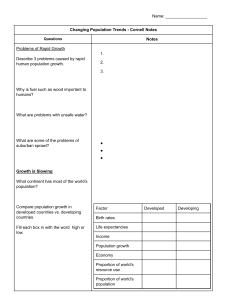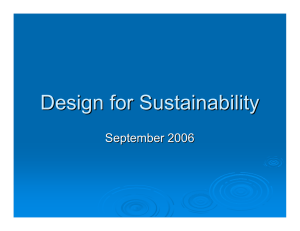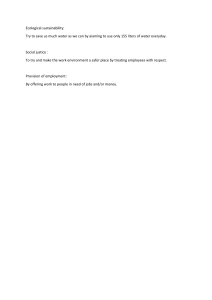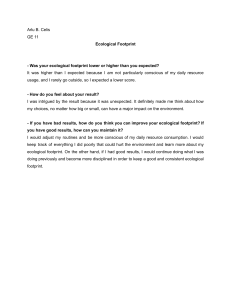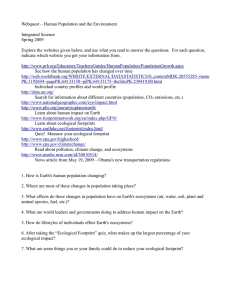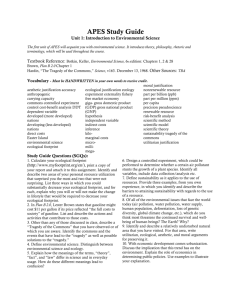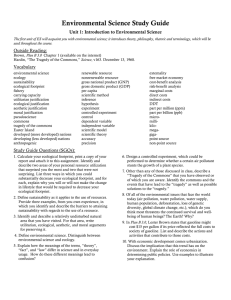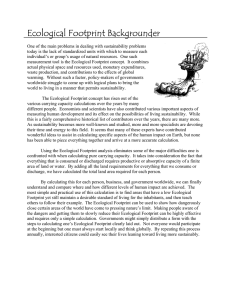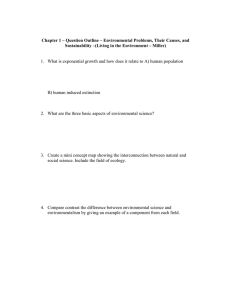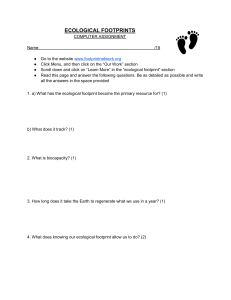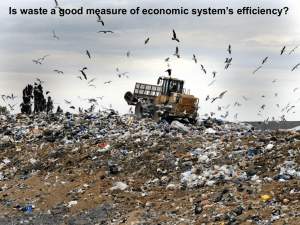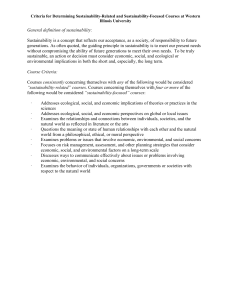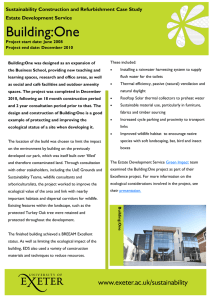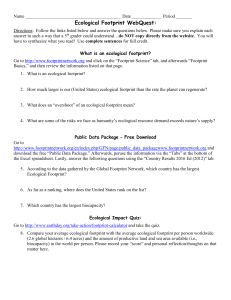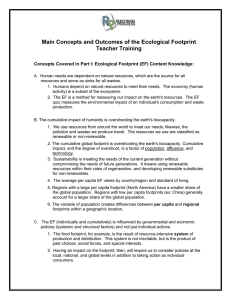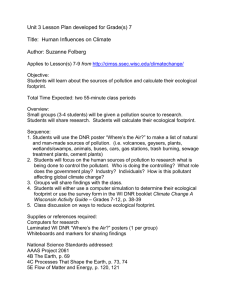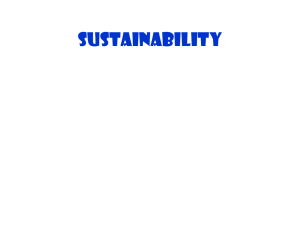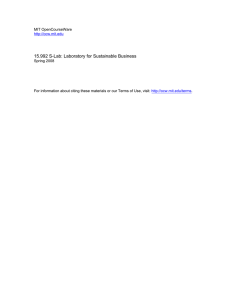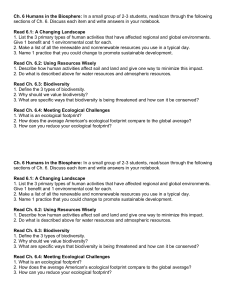Holt Study Guide Unit 1
advertisement
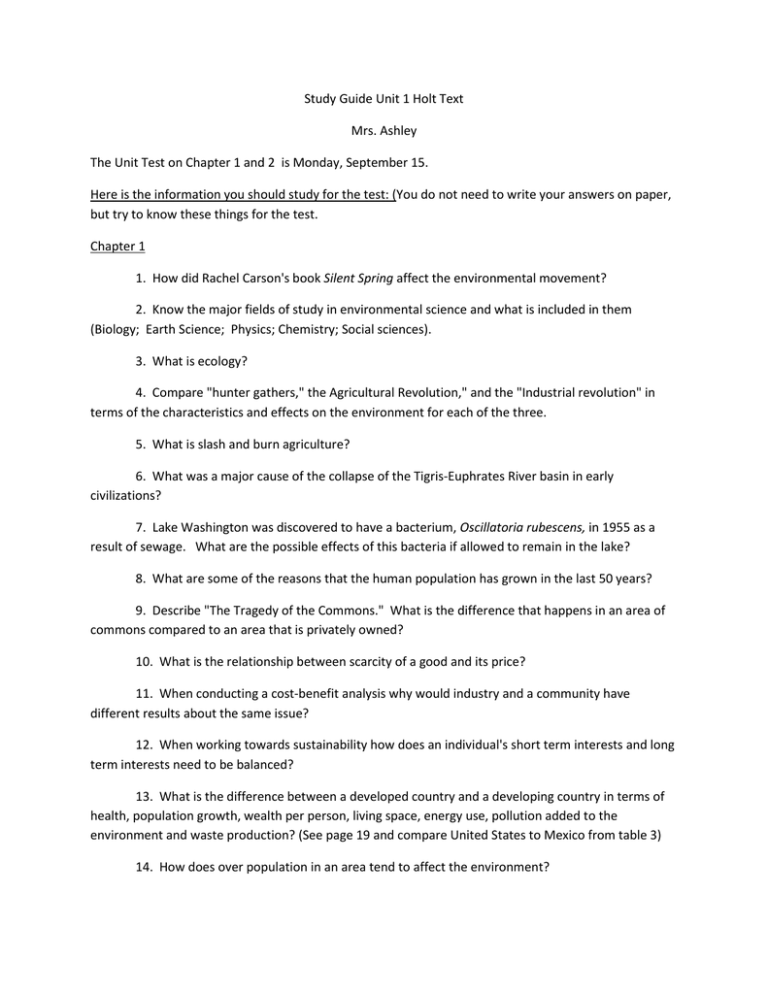
Study Guide Unit 1 Holt Text Mrs. Ashley The Unit Test on Chapter 1 and 2 is Monday, September 15. Here is the information you should study for the test: (You do not need to write your answers on paper, but try to know these things for the test. Chapter 1 1. How did Rachel Carson's book Silent Spring affect the environmental movement? 2. Know the major fields of study in environmental science and what is included in them (Biology; Earth Science; Physics; Chemistry; Social sciences). 3. What is ecology? 4. Compare "hunter gathers," the Agricultural Revolution," and the "Industrial revolution" in terms of the characteristics and effects on the environment for each of the three. 5. What is slash and burn agriculture? 6. What was a major cause of the collapse of the Tigris-Euphrates River basin in early civilizations? 7. Lake Washington was discovered to have a bacterium, Oscillatoria rubescens, in 1955 as a result of sewage. What are the possible effects of this bacteria if allowed to remain in the lake? 8. What are some of the reasons that the human population has grown in the last 50 years? 9. Describe "The Tragedy of the Commons." What is the difference that happens in an area of commons compared to an area that is privately owned? 10. What is the relationship between scarcity of a good and its price? 11. When conducting a cost-benefit analysis why would industry and a community have different results about the same issue? 12. When working towards sustainability how does an individual's short term interests and long term interests need to be balanced? 13. What is the difference between a developed country and a developing country in terms of health, population growth, wealth per person, living space, energy use, pollution added to the environment and waste production? (See page 19 and compare United States to Mexico from table 3) 14. How does over population in an area tend to affect the environment? 15. What are most people lacking in a developing country (about half)? 15. Compare how people in developed countries use resources as compared to developing countries. 16. Which country has the largest ecological footprint? What is an ecological footprint? Chapter 2 and our experiments in class: 17. How the results of the green down lab can inform scientists about climate change. 18. What is meant by a control in an experiment 19. The procedure for zeroing a scale 20. The purpose of the leaf pack experiment 21. Be able to describe in detail the differences between Wildflower Island and the forest area around Bailey Stream and the probable reason for the differences. Relate these two areas to issues of population and species diversity. 22. Know the processes in the scientific method including: observation and questions, forming hypotheses; collecting data, interpreting results, repeating experiments, and communicating findings. 23. Know the vocabulary of experimentation: variable, control group, experimental group, correlation, theory, law, and model. 24. Give an example of how a scientist uses curiosity, skepticism, openness to new ideas, intellectual honesty, imagination or creativity to think scientifically. 25. Be able to describe a model. How are physical models, graphical models, conceptual models and mathematical models different? 26. When making environmental decisions, certain values may affect that decision. Be able to list at least 4 values that affect environmental decision making. 27. Often scientists make informed decisions about the environment by thinking of all the positive and negative consequences both short and long term. Think of a situation related to the environment and list the short term and long term negative and positive outcomes of a particular decision. 28. What is the present population of the Earth? 29. Define sustainability and explain ecological footprint.
